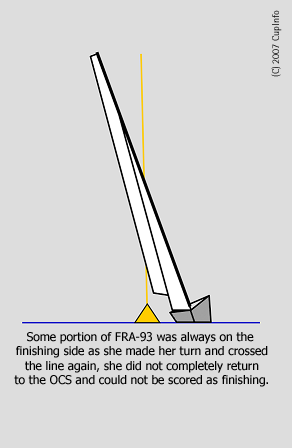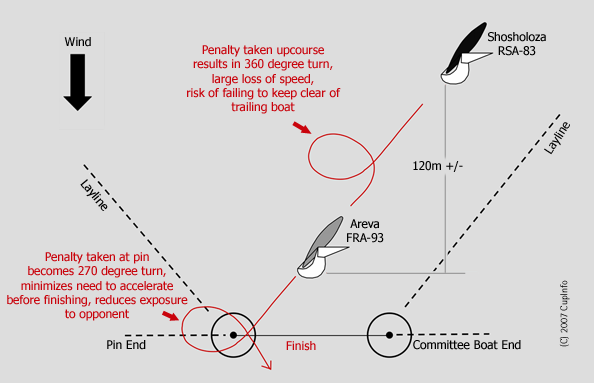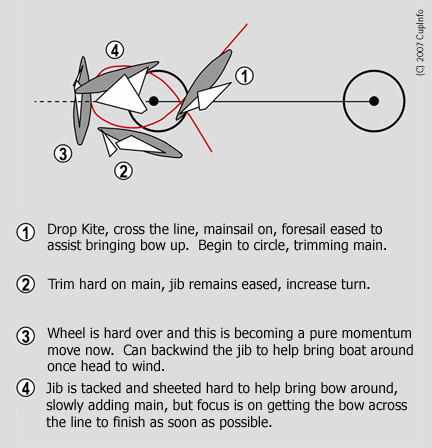|
Also see: RR2 Results | RR1 Detailed Flight Results | RR Schedule | Main RR1 Page |
|
|
Areva Challenge's penalty turn and subsequent scoring as Did Not Finish (DNF) generated a lot of discussion and some questions. Below are some diagrams that may help explain what happened. Areva Challenge carrying a penalty tried to take the turn on the finish line, circling the finishing mark.
A boat sailing a downwind leg will discharge their penalty by doing a turn that includes a tack. When a boat has a large lead, they might choose to take the turn further up the course. With an opponent close behind, taking the turn around the finishing mark is usually preferred. |
|
|
|
 |
|
Two of the applicable Rules: The required penalty turn: Finishing after a penalty turn: Several other rules and some practical issues also affect the situation and add motivation for taking the penalty at the finish. Spinnaker Drop: Keeping Clear: Racing Keeping Clear:
Port-Starboard Reference Point: In Areva's Case, umpires were watching closely and did not observe that FRA-93 returned entirely to the course side. Areva was scored as DNF, Shosholoza got the win. Links of Interest: Read the America's Cup Jury's response to Areva's Request for Redress following the incident, Full text of the Jury Notice ACJ028 (pdf). Areva requested Redress, suggesting that the call had been made in error, and submitted evidence including telemetry and video that they felt confirmed their position. The umpires in turn stated that they had watched closely on the points in question and that Areva did not clear the line. In the absence of sufficient evidence, the Request was denied. Download the
Racing Rules of Sailing 2005-2008 (pdf),
from the
International Sailing Federation. |
|

